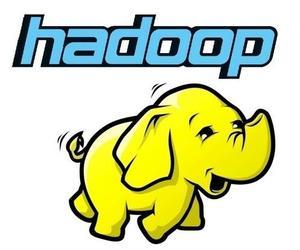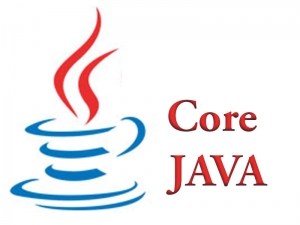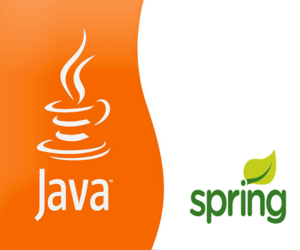Blue Prism Interview Questions and Answers
 (5.0) | 65,984 Ratings
(5.0) | 65,984 Ratings

Blue Prism Interview Questions and Answers for beginners and experts. List of frequently asked Blue Prism Interview Questions with answers by Greens Technologys. We provide Best Blue Prism Training in Chennai with Placement in leading companies.
We hope these Blue Prism interview questions and answers are useful and will help you to get the best job in the industry. This BLUE PRISM interview questions and answers are prepared by BLUE PRISM Professionals based on MNC Companies expectation. Stay tune we will update New Blue Prism Interview questions with Answers Frequently. If you want to learn Practical Blue Prism Training then please goes through this Blue Prism Training in Chennai.
Greens Technologys supports the students by providing Blue Prism interview questions and answers for the job placements and job purposes. Blue Prism is the leading important course in the present situation because more job openings and the high salary pay for this Blue Prism and more related jobs.
Here are the list of most frequently asked Blue Prism Interview Questions and Answers in technical interviews. These questions and answers are suitable for both fresher’s and experienced professionals at any level. The questions are for intermediate to somewhat advanced Blue Prism professionals, but even if you are just a beginner or fresher you should be able to understand the answers and explanations here we give.
Q. What is Robotic Automation?
Robotic automation refers to a style of automation where a machine, or computer, mimics a human’s action in completing rules based tasks.
Q. What does Robotic Automation mean in the context of back office administrative process automation?
In the domain of back office administration, Robotic Automation refers to automation where a computer drives existing enterprise application software in the same way that a user does. This means that unlike traditional application software, Robotic Automation is a tool or platform that operates and orchestrates other application software through the existing application’s user interface and in this sense is not “integrated”.
Q. What are the advantages of robotically orchestrating existing applications through the user interface?
- No IT infrastructure changes are required – there is no integration requirement – the robots interface with any application through the user interface in the same way a user does.
- No integration costs – robots drive existing applications.
- IT robots are “trained” by their users by being “shown” how to complete a task. This is akin to training a new employee.
- A robot once trained can scale across any number of other robots.
- The robot knowledge is extended and re-used over time.
- A robot is trained in the live environment making projects less expensive and much faster than traditional IT.
- Multiple robots applied to a task can be synchronised to deliver large-scale robotic platforms.
Q. How easy is it to train and manage the robots activity?
- A robot is trained through a flow chart of the procedure. This flow-chart is managed and audited to document the procedure.
- Management information is gathered automatically as the robot operates. All processes generate statistical profiles as a by-product of doing the action. This allows tuning and development of a process in light of real data.
- Modern robots systems come with failover and recovery inbuilt as core capabilities. It means that if changes take place, or downstream failures occur a “smart” response can be trained into the overall system.
- Modern robots systems have full audit and security authorisation meaning that all changes and all access is recorded and regulated. Back-up process steps are managed, roll-back and recovery, as well process change-highlighting, are all automatically captured by the robot platform.
Q. Why is Robotic Automation different from Business Process Management Systems - BPMS?
BPMS is principally aimed at improving IT architecture to allow greater flexibility in automation and process management capability. Most often its aim is to support agent productivity through desktop acceleration, application connectivity, and workflow management. As such BPMS is part of the core IT tool set, to which adjustments outside of configurable parameters to a solution normally require a traditional IT change-program. Most often connectivity between applications, and design work on how applications should be integrated against business requirements is a key skill that is required to operate BPMS effectively.
Robotic Automation is principally aimed at clerical staff replacement as opposed to clerical staff acceleration as with BMPS. The philosophy of the approach is therefore to target routine, repetitive, rules-based tasks (procedures as sub-tasks within a larger business processes). Such tasks can often tie clerical staff down for long stretches of time. Very often such tasks are small, possibly involving 5-10 people, and so do not justify large IT, or even BPMS, projects to automate. The difference for robot automation is that no IT is required, and business users can “show” the robot what to do. The capability is therefore distributed to operations staff so as to divide-and-conquer many mid-to-small automation initiatives that would otherwise require people.
Q. Is Robotic Automation competitive with BPMS?
No, Robotic automation extends and complements BPMS and SOA initiatives which are attacking the automation challenge from a different, top down, IT driven angle. Robotic automation is aimed at small-to-mid size automation initiatives. Where speed and size and agility are major factors, then robotic automation is often the fastest and most efficient approach. When larger initiatives are required with a fuller “Business Process” character then BPMS may be better suited.
This difference in scale is illustrated with the so called Long Tail of Automation Requirements. This says that core IT deals with the high volume bulk processing requirements an organisation may have. Typically, these are core ERP systems, mainframe accounting and core data bases. As we move towards the middle of the graph requirements become more specialist and diverse. This is where an organisation often differentiates its product and service offerings. Typical technologies here are workflow, desktop integration, BPMS, agent acceleration. These are large IT control programs that service to offer a platform for automation and work management.
Finally we have the third section of Long Tail – these tasks are characterized by their diversity. Often they are too diverse to make an IT change program, and may be too small to justify IT project costs. Here traditional approaches have been to outsource, or offshore in order to adjust labour rates to make the task more competitive. Robotic automation offers an alternative to off shoring or outsourcing – presenting a new cost-band of labour based on robots.
Do not wait anymore! Call Us @ 89399 15572 to know more about Blue prism Training in Chennai. You can also contact us by submitting the Quick Enquiry form on the right side of this page to know more about the Blue Prism Course in Chennai.








